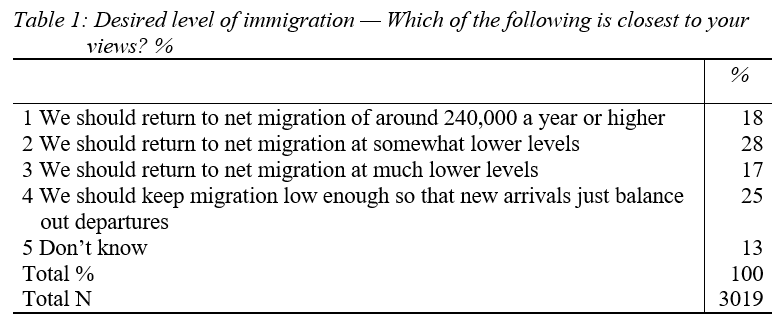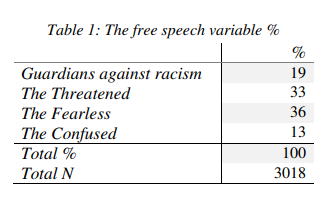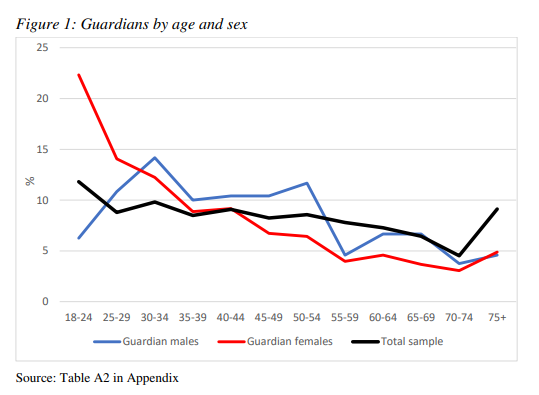Over the past week we have witnessed claims (here and here) that the purported “consensus” supporting high levels of immigration into Australia is fraying amid concerns around housing shortages, infrastructure and services.
The truth is that the only parties with a “consensus” supporting high levels of immigration are within the business, property, and education-migration industries, alongside their economist and media supporters.
Australian voters have always hated high levels of immigration because they know that it means that their quality of life and ability to afford a decent home will be degraded.
Earlier this year, the Australian Population Research Institute (TAPRI) released polling showing that 70% of Australians wanted lower levels of immigration (of which 42% wanted significantly lower or zero immigration):

Source: The Australian Population Research Institute (TAPRI)
Resolve Political Monitoring last month released polling showing that 59% of Australians believe that immigration numbers are “too high”, while only 25% believe immigration numbers are “about right” and only 3% think they are “too low”:

“Many people are now concerned at the higher immigration numbers, with the comments we collect from respondents pinpointing the effects on quality of life and prices”, Resolve director Jim Reed said.
“When you throw hundreds of thousands of people into cities without increasing housing supply and infrastructure, they figure it’s got to have an effect”.
These results mirror polls taken before the pandemic showing that Australians want lower levels of immigration. For example:
- Newspoll (2018): 56% want lower immigration;
- Essential (2018): 54% believe Australia’s population is growing too fast and 64% believe immigration is too high;
- Lowy (2018): 54% of people think the total number of migrants coming to Australia each year is too high; and
- Newspoll (2018): 74% of voters support the Turnbull government’s cut of more than 10% to the annual permanent migrant intake to 163,000 last financial year.
These are only a small sample of polls, all of which show that Australians do not support high levels of immigration.
This voter opposition is why the Albanese Government did not tell the Australian people during last year’s federal election campaign that Labor would lift immigration to record levels if elected.
Because Labor understood that if they told voters they intended to ramp immigration, they would have lost the election. It’s that simple.
With this background in mind, TAPRI last week released a report entitled “Free speech on immigration versus the guardians against racism”, which explains how Australians are being silenced against showing dissent against the federal government’s mass immigration policy.
Below is the Executive Summary, alongside key charts:
With the end of Covid-era restrictions Australia is experiencing both a housing crisis and a surge in immigration-fuelled population growth. How is that such a surge can be happening at such a time?
Yes, the level of demand from international students and others was unexpected but the Government was not powerless to stem it.
There are two linked answers to the question. One is the work of an influential growth lobby (developers, employers, universities) supported by Treasury. This activity is shielded from the public by a tacit agreement among the major political parties to keep the topic of immigration off the public agenda.
Indeed, during the May 2022 Federal election campaign Phil Honeywood in fact spoke of a ‘bipartisan cone of silence on migration’.
The second answer involves a more diffuse influence. This stems from parts of the media, academia, some NGOs, and a significant section of the wider public.
It manifests as the social norm that decent people do not criticise the level of immigration. This has consequences.
There is now strong evidence that many Australians feel silenced and afraid to speak on some public matters.
For example, a recent survey by Essential Research found that 67 percent of respondents say that ‘People are scared to say what they really think because they don’t want to be labelled as racist’.
The data explored in this paper concerns this second answer. It is taken from the September 2022 national survey of 3018 voters conducted by The Australian Population Research Institute (Tapri).
The survey focused on attitudes to population growth and immigration but it also covered a range of other cultural topics: ethnic diversity, transgender, the referendum on an Indigenous voice to parliament, Australia Day, and readiness to help defend Australia.
The survey instrument contained two questions designed to help discern who was likely to discourage conversations about the size of the immigration intake, who was likely to feel threatened by such discouragement, and who was not. The questions were:
‘Do you think that people who raise questions about immigration being too high are sometimes seen as racist?’ Response categories: Yes, No, and Don’t know.
Those who chose ‘Yes’ were then asked to choose between these two statements: ‘This is because they usually are racist’ or ‘This is unfair because very few of them are racist’.

This sequence produced four categories:
- Those who said ‘Yes’ to first question and chose ‘This is because they usually are racist’ were termed the Guardians against racism. They constitute 19 percent of the sample.
- Those who said ‘Yes’ to the first question and chose ‘This is unfair because very few of them are racist’ were termed the Threatened (33 percent of the sample).
- Those who said ‘No’ to the first question were termed the Fearless (36 percent).
- And those who said ‘Don’t know’ to the first question were termed the Confused (13 percent).
Further analysis found that the Guardians against racism were disproportionately in favour of high immigration, 240,000 net a year or more (41 percent in favour compared to 12 percent of the rest of the sample).
They were much more likely to say that Australia needs more people (61 percent, compared to 29 percent of the rest of the sample).
They also felt more free to talk to others about these beliefs (57 per cent were either happy to talk about their support for high immigration or had felt no need to question it) while 35 percent of the Threatened feared that people would get the wrong about them if they voiced their opinion.

Guardians tended to be younger than the rest of the sample, better educated, and more financially secure. They were also rather more likely to be Australian-born (86 percent as opposed to 81 percent of the rest of the sample) and slightly more likely than the Threatened or the Fearless to live in capital cities.

They were also more likely to vote for Labor or the Greens (75 percent would do so, as opposed to 49 percent of the rest of the sample).
The Fearless were the group most likely to say that they would vote for the Coalition or One Nation (43 percent, as opposed to 18 percent of the Guardians).
There is little difference between the Guardians and others on questions concerning economics.
Neoliberalism in the form of free trade, privatisation and low taxation was unpopular with strong majorities across the board.
But as far as other topics were concerned the Guardians were different. They were, for example, much more likely to say that they were very worried about climate change (59 percent ‘very worried’ as opposed to 31 percent of the rest of the sample).
Moreover 64 percent of Guardians wanted to increase immigration in order to increase ethnic and other forms of diversity, compared to 20 percent of the rest of the sample.
Forty-eight percent of Guardians strongly agreed or agreed that a woman is anyone who identifies as a woman, compared to 20 percent of the rest of the sample.
Sixty-six percent of Guardians said that they would vote ‘Yes’ in the referendum on an Indigenous voice to Parliament, compared to 33 percent of the rest of the sample.
Sixty-three percent of Guardians supported or strongly supported changing the date of Australia Day, compared to 30 percent of the rest of the sample.
Tapri also asked this question: ‘Thinking of Russia’s invasion of Ukraine, what would you do as an Australian if we faced a similar invasion?’ Leave Australia, Stay and fight, Stay and help the fighters, or Don’t know.
Nineteen percent of Guardians said that they would leave Australia, compared to nine percent of the rest of the sample, or 11 percent of the total sample.
Guardians disproportionately live in Canberra which may help explain the 33 percent of voters who live there and also say that, in the event of an invasion, they would leave Australia.
Overall the Guardians are a small minority but they tend to be graduates, younger, better educated and more financially secure than other voters. But on immigration, population growth, growing ethnic diversity, transgender, and Indigenous matters, as well as readiness to defend their country, they are quite unlike other voters. Nevertheless, their role in keeping a lid on open debate is pervasive.
Unlike the growth lobby they have no material stake in high immigration. Theirs is a moral position, not a material one. Because of this they are likely to see those who do not share their position as morally suspect, and to see their shaming as legitimate.
The non-Guardians account for 81 percent of the sample, and 75 percent of them want lower immigration or none at all (ie nil net migration).
The censorious climate created but the Guardians mutes public discussion but seems not to have changed the opinions of the majority. Their feelings as of now are not mobilised, but this may not always be the case.
The above highlights why we should settle the debate once and for all via a plebiscite on Australia’s future population.
Or don’t the ‘guardians against racism’ and the Big Australia lobby believe in democracy?
Sadly, we all know that a population plebiscite would never happen because politicians know that it would stop the Big Australia mass immigration policy in its tracks.
So, despite the faux “immigration consensus” collapsing, extreme levels of immigration will continue. As will faux debates around housing affordability, ‘net zero’ and other woke issues.

